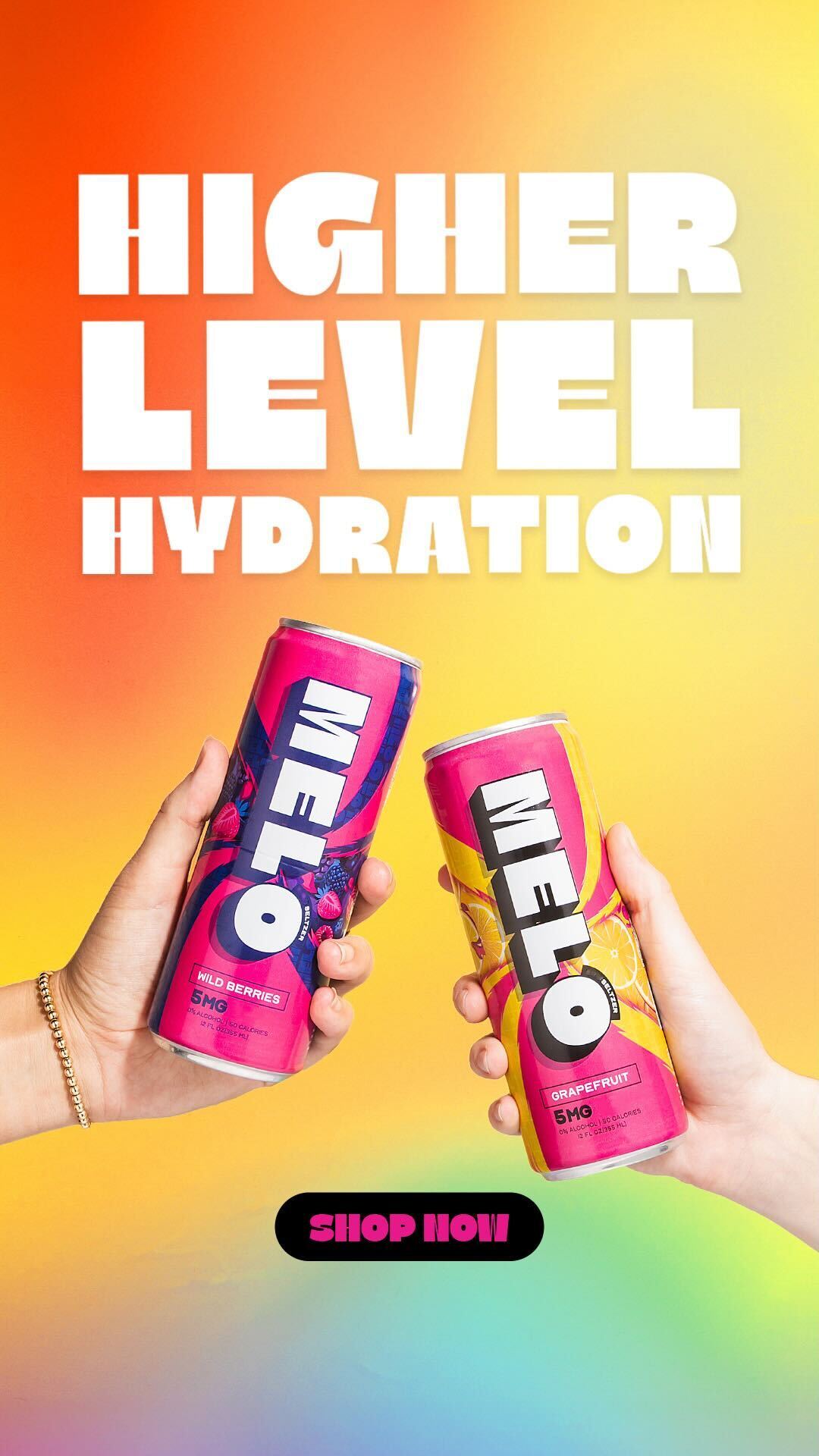Cannabis and Carbonation
Cannabis and carbonation, two seemingly disparate elements, have come together in a surprising fusion: THC-infused sparkling beverages. This trend has taken the cannabis industry by storm, offering a new way to consume cannabinoids that is both refreshing and potentially more discreet. But what exactly happens when these two worlds collide on a molecular level? Understanding the science behind THC-infused carbonation reveals intriguing insights into the delivery and effects of this popular psychoactive compound.
Historical Use of Cannabis and Carbonated Beverages
Cannabis and carbonation, two seemingly disparate elements, have come together in a surprising fusion: THC-infused sparkling beverages. This trend has taken the cannabis industry by storm, offering a new way to consume cannabinoids that is both refreshing and potentially more discreet. But what exactly happens when these two worlds collide on a molecular level? Understanding the science behind THC-infused carbonation reveals intriguing insights into the delivery and effects of this popular psychoactive compound.
The key to understanding this unique combination lies in the solubility of THC (tetrahydrocannabinol). THC is a fat-soluble compound, meaning it readily dissolves in lipids but not well in water.
- Traditional cannabis edibles utilize heat and fats during preparation to enhance THC absorption.
- Carbonated beverages, on the other hand, are primarily water-based. This poses a challenge for efficiently incorporating THC into these drinks.
To overcome this solubility hurdle, manufacturers employ various techniques:

- Emulsifiers: These agents help to create tiny droplets of fat within the aqueous solution, allowing for better dispersion of THC.
- Nanotechnology: Encapsulating THC in nanoparticles increases its surface area and solubility, improving absorption.
Evolution of THC-Infused Carbonated Drinks
The key to understanding this unique combination lies in the solubility of THC (tetrahydrocannabinol). THC is a fat-soluble compound, meaning it readily dissolves in lipids but not well in water.
Traditional cannabis edibles utilize heat and fats during preparation to enhance THC absorption. Carbonated beverages, on the other hand, are primarily water-based. This poses a challenge for efficiently incorporating THC into these drinks.
To overcome this solubility hurdle, manufacturers employ various techniques: Emulsifiers: These agents help to create tiny droplets of fat within the aqueous solution, allowing for better dispersion of THC. Nanotechnology: Encapsulating THC in nanoparticles increases its surface area and solubility, improving absorption.
The Science of THC Infusion
The marriage of cannabis and carbonation has given rise to a novel way to consume cannabinoids: THC-infused sparkling beverages. This trend presents a refreshing and potentially discreet method of enjoying THC’s psychoactive effects. However, the science behind this fusion reveals a fascinating challenge: THC is fat-soluble, while water forms the base of these beverages.
Solubility of THC in Liquid
To effectively incorporate THC into carbonated drinks, manufacturers utilize several ingenious techniques. One common method involves the use of emulsifiers. These specialized substances act like tiny bridges, allowing fat molecules carrying THC to blend seamlessly with the water-based beverage. This creates a more stable mixture where THC is evenly distributed, enhancing its bioavailability.
Another innovative approach leverages nanotechnology. By encapsulating THC within incredibly small nanoparticles, manufacturers dramatically increase its surface area. This increased exposure to the liquid medium significantly enhances THC’s solubility, facilitating faster and more efficient absorption into the body.
Factors Affecting THC Solubility
The science of THC infusion in carbonated beverages revolves around overcoming the challenge posed by THC’s fat-soluble nature. Traditional edibles utilize heat and fats to enhance absorption, but carbonated drinks are primarily water-based. To bridge this gap, manufacturers employ various techniques.
Emulsifiers play a crucial role by creating tiny fat droplets within the water, allowing for better THC dispersion. Nanotechnology offers another solution: encapsulating THC in nanoparticles. This significantly increases its surface area and solubility, leading to improved absorption.
Methods for Infusing THC into Carbonated Beverages
The science of THC infusion in carbonated beverages revolves around overcoming the challenge posed by THC’s fat-soluble nature. Traditional edibles utilize heat and fats to enhance absorption, but carbonated drinks are primarily water-based. To bridge this gap, manufacturers employ various techniques.
Emulsifiers play a crucial role by creating tiny fat droplets within the water, allowing for better THC dispersion. Nanotechnology offers another solution: encapsulating THC in nanoparticles. This significantly increases its surface area and solubility, leading to improved absorption.
Carbonation and its Impact on THC Absorption
The marriage of cannabis and carbonation has given rise to a novel way to consume cannabinoids: THC-infused sparkling beverages. This trend presents a refreshing and potentially discreet method of enjoying THC’s psychoactive effects. However, the science behind this fusion reveals a fascinating challenge: THC is fat-soluble, while water forms the base of these beverages.
Mechanism of CO2 Dissolution
Carbonation plays a unique role in the delivery and absorption of THC in sparkling beverages.
The process begins with the dissolution of CO2 (carbon dioxide) into the liquid. CO2 molecules are highly soluble in water, forming carbonic acid (H2CO3), which then dissociates to create bicarbonate ions (HCO3-) and hydrogen ions (H+). These ions contribute to the characteristic tartness of carbonated drinks.

This dissolution process actually enhances THC absorption. The increased acidity from carbonic acid can help to break down fats and lipids, making THC more readily available for absorption through the gastrointestinal tract.
Influence of Carbonation Level on THC Bioavailability
The marriage of cannabis and carbonation has given rise to a novel way to consume cannabinoids: THC-infused sparkling beverages. This trend presents a refreshing and potentially discreet method of enjoying THC’s psychoactive effects. However, the science behind this fusion reveals a fascinating challenge: THC is fat-soluble, while water forms the base of these beverages.
Carbonation plays a unique role in the delivery and absorption of THC in sparkling beverages.
The process begins with the dissolution of CO2 (carbon dioxide) into the liquid. CO2 molecules are highly soluble in water, forming carbonic acid (H2CO3), which then dissociates to create bicarbonate ions (HCO3-) and hydrogen ions (H+). These ions contribute to the characteristic tartness of carbonated drinks.
This dissolution process actually enhances THC absorption. The increased acidity from carbonic acid can help to break down fats and lipids, making THC more readily available for absorption through the gastrointestinal tract.

Potential Benefits of Carbonated THC Delivery Systems
The marriage of cannabis and carbonation has given rise to a novel way to consume cannabinoids: THC-infused sparkling beverages. This trend presents a refreshing and potentially discreet method of enjoying THC’s psychoactive effects. However, the science behind this fusion reveals a fascinating challenge: THC is fat-soluble, while water forms the base of these beverages.
Carbonation plays a unique role in the delivery and absorption of THC in sparkling beverages. The process begins with the dissolution of CO2 (carbon dioxide) into the liquid. CO2 molecules are highly soluble in water, forming carbonic acid (H2CO3), which then dissociates to create bicarbonate ions (HCO3-) and hydrogen ions (H+). These ions contribute to the characteristic tartness of carbonated drinks.
This dissolution process actually enhances THC absorption. The increased acidity from carbonic acid can help to break down fats and lipids, making THC more readily available for absorption through the gastrointestinal tract.
The benefits of this unique delivery system are multifaceted. First, the carbonation itself can lead to a faster onset of effects compared to traditional edibles. This is because the increased acidity aids in breaking down THC molecules, allowing them to enter the bloodstream more quickly.
Second, the refreshing nature of sparkling beverages can make for a more enjoyable experience than ingesting concentrated THC products. Third, the discreet nature of these drinks allows for easier consumption in various social settings.
Challenges and Considerations
The marriage of cannabis and carbonation has given rise to a novel way to consume cannabinoids: THC-infused sparkling beverages. This trend presents a refreshing and potentially discreet method of enjoying THC’s psychoactive effects. However, the science behind this fusion reveals a fascinating challenge: THC is fat-soluble, while water forms the base of these beverages.
Carbonation plays a unique role in the delivery and absorption of THC in sparkling beverages. The process begins with the dissolution of CO2 (carbon dioxide) into the liquid. CO2 molecules are highly soluble in water, forming carbonic acid (H2CO3), which then dissociates to create bicarbonate ions (HCO3-) and hydrogen ions (H+). These ions contribute to the characteristic tartness of carbonated drinks.
This dissolution process actually enhances THC absorption. The increased acidity from carbonic acid can help to break down fats and lipids, making THC more readily available for absorption through the gastrointestinal tract.
Stability and Degradation of THC in Carbonated Drinks
The marriage of cannabis and carbonation has given rise to a novel way to consume cannabinoids: THC-infused sparkling beverages. This trend presents a refreshing and potentially discreet method of enjoying THC’s psychoactive effects. However, the science behind this fusion reveals a fascinating challenge: THC is fat-soluble, while water forms the base of these beverages.
To overcome this solubility hurdle, manufacturers employ various techniques:
- Emulsifiers: These agents help to create tiny droplets of fat within the aqueous solution, allowing for better dispersion of THC.
- Nanotechnology: Encapsulating THC in nanoparticles increases its surface area and solubility, improving absorption.
The science of THC infusion in carbonated beverages revolves around overcoming the challenge posed by THC’s fat-soluble nature. Traditional edibles utilize heat and fats to enhance absorption, but carbonated drinks are primarily water-based. To bridge this gap, manufacturers employ various techniques.
Emulsifiers play a crucial role by creating tiny fat droplets within the water, allowing for better THC dispersion. Nanotechnology offers another solution: encapsulating THC in nanoparticles. This significantly increases its surface area and solubility, leading to improved absorption.
Challenges and considerations surrounding the stability and degradation of THC in carbonated drinks include:
- pH Levels: The acidity of carbonated beverages can affect THC’s stability.
- Oxidation: Exposure to air can lead to the oxidation of THC, altering its potency and effects.
- Temperature: Heat accelerates the degradation of THC. Therefore, proper storage and handling are crucial to preserve product quality.
Understanding these factors is essential for manufacturers to ensure that THC-infused carbonated beverages remain potent and safe for consumption.
Dosage Accuracy and Consistency
Dosage accuracy and consistency pose significant challenges in THC-infused carbonation. The fat-soluble nature of THC, combined with the complexities of incorporating it into a water-based beverage, introduces variability in absorption rates. Factors like individual metabolism, gastric emptying time, and even the specific ingredients used in the drink can influence how much THC is actually absorbed by the body.
This inherent variability makes it difficult to standardize dosing for THC-infused beverages. Unlike traditional edibles where precise doses are often achieved through weighed portions of cannabis-infused oil or butter, achieving consistent and reliable dosing in carbonated drinks presents a greater challenge.
Several factors contribute to these challenges:
- Solubility Issues: As previously discussed, THC’s fat-soluble nature complicates its distribution within the beverage.
- Carbonation Effects: The bubbles and fizz in carbonated drinks can influence THC absorption, potentially leading to inconsistent uptake.
- Manufacturing Processes: Variations in manufacturing procedures, such as emulsifier ratios or nanoparticle encapsulation methods, can impact THC content and bioavailability.
Manufacturers are actively working on strategies to address these issues. Precise dosing may involve using standardized production techniques, employing innovative delivery systems like micro-encapsulation, or incorporating ingredients that enhance THC absorption.
Further research is needed to fully understand the complex interplay of factors influencing THC bioavailability in carbonated beverages. In the meantime, consumers should exercise caution when consuming these products, starting with low doses and carefully monitoring their effects.
Regulatory Landscape for THC-Infused Beverages
The regulatory landscape for THC-infused beverages presents a complex and evolving terrain.
At the federal level in the United States, cannabis remains classified as a Schedule I substance under the Controlled Substances Act, limiting interstate commerce and research. However, individual states have the authority to legalize and regulate cannabis products, including THC-infused beverages, within their borders.
This patchwork of state laws creates a fragmented regulatory environment, with varying standards for production, labeling, sale, and consumption of these products.
Some states have established comprehensive regulatory frameworks that include licensing requirements, product testing protocols, potency limits, and advertising restrictions. Others may have more lenient regulations or are still in the process of developing their cannabis laws.
Navigating this complex landscape requires careful attention to both federal and state regulations. Manufacturers must comply with all applicable rules and guidelines to ensure legal operation and consumer safety.
Key challenges and considerations within the regulatory landscape include:
- Inconsistency in State Laws: The lack of uniform national standards creates confusion for businesses, consumers, and regulators alike.
- Product Safety and Testing: Establishing rigorous testing protocols to ensure product safety, purity, and accurate labeling is crucial.
- Age Verification and Access Control: Effective measures are needed to prevent underage access to THC-infused beverages.
- Public Health Concerns: Monitoring the potential health impacts of these products, particularly regarding their effects on youth and individuals with pre-existing conditions, is essential.
As the cannabis industry continues to evolve, ongoing dialogue and collaboration between regulators, industry stakeholders, and public health experts will be crucial for establishing clear, consistent, and effective regulations that protect consumers while promoting responsible innovation.
Try Melo Seltzer sparkling THC water
- Navigating Relationships As A Lithromantic Individual - May 12, 2025
- Homeovestism Fetish: Exploring The Erotic Appeal Of Same-Gender Clothing - May 12, 2025
- The Science Behind THC-Infused Carbonation - May 11, 2025
